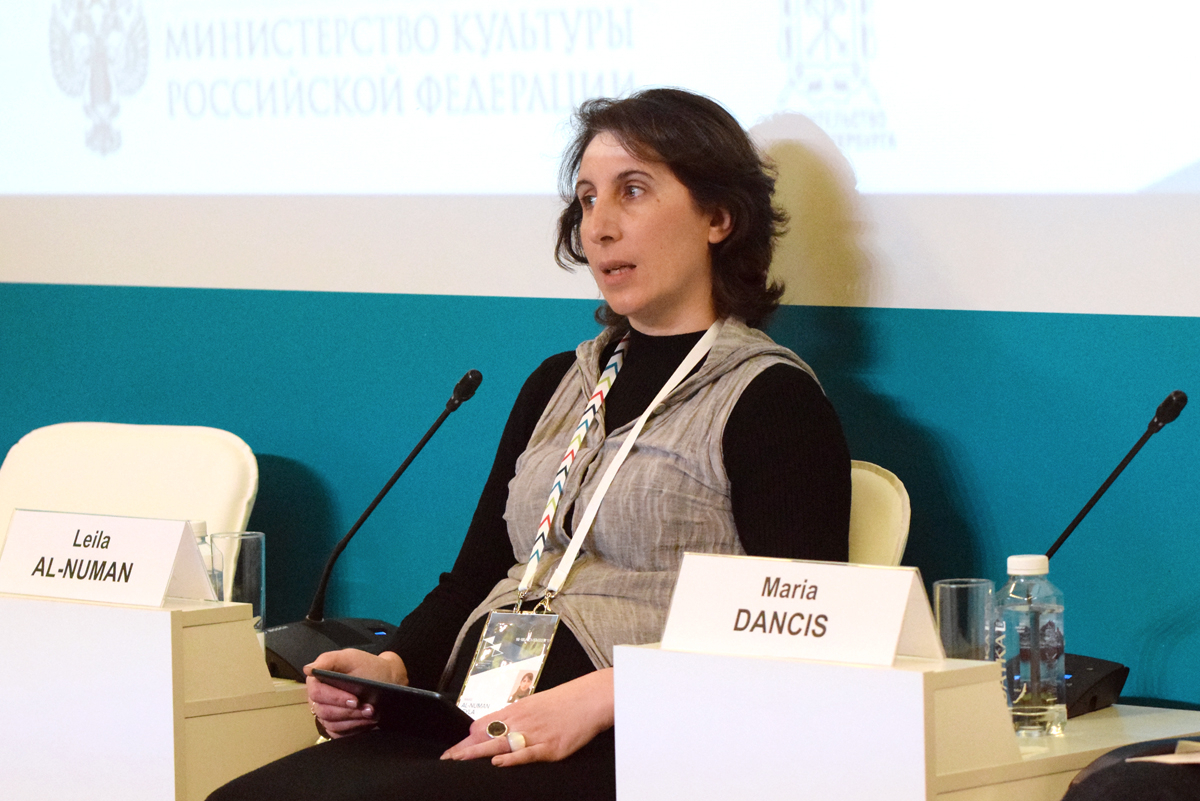Art-university graduate: A creator or an artisan?
Can an art-university equip its students with the opportunities to gain competitive knowledge and what seduces the students of the art-universities? These are the questions discussed at the discussion panel “No institutions? The future of the art-education” organized by the SPbU Alumni Association at the section Education at the VI International Cultural Forum.
“The name of our discussion features a cold and distant word “institution”. In fact, it focuses on an organization that is directly related to the artist’s all life spheres and achievements”, — said the moderator of the discussion, SPbU Associate Professor and museum worker at the Russian Museum Aleksei Boiko. Those who took part in the discussion immediately agreed that success in arts is rested on the environment where the artists are brought up.
The moderator of the discussion, SPbU Associate Professor and museum worker at the Russian Museum Aleksei Boiko
A number of difficulties any teacher can encounter were defined by the honoured artist of the Russian Federation and SPbU Professor Ivan Uralov. Among them is antagonism of the traditional education and demands in the art-market.
Today, the major achievements are those concerned with the exhibitions, and it stimulates ranking races. It makes our young people primarily concerned with how to express themselves, rather than how to educate themselves.
The honoured artist of the Russian Federation and SPbU Professor Ivan Uralov
“In my opinion, it seduces the students and puts traditional knowledge under the threat. It makes an artisan out of them rather than a creator. Such situation is possible in the applied arts, but not in graphics and painting that are now in an ambiguous situation”, — said Ivan Uralov.
Another current problem was outlined by the honoured artist of the Russian Federation and academician of the Russian Academy of Arts Nikita Fomin. “The student community tends to neglect the fundamentals of the arts. Many of them don’t want to study the basics of the painting or composition. Let us take an example: at the class, I explain that most people read from left to right and it influences how we perceive the world. The first thing that I hear from the audience is “I am from Israel and I read from right to left!"”, — he said.
Such attitudes to the canons, in his opinion, are deeply rooted in the early 20th century when social realism focused on the content rather than form. In the second half of the 20th century, the tendency only intensified: simple and rough forms were regarded as an expressive means, rather than a lack of style.
At the V International Cultural Forum 2016, the University and Russian Museum signed an agreement on collaboration in various spheres: the leading methodologist in museum education at the Russian Museum Aleksei Boiko delivers lectures on architecture and arts of the 20-21st centuries to the University’s students, while the senior research fellow of the Department of the Latest Trends Olesia Turkina educates the curators. Besides, SPbU is actively engaged in developing collaboration with the Hermitage and Peterhof Museum: its director is the head of the educational councils of three educational programmes.
The honoured architect of Russia and President of the St Petersburg Union of Architects Mikhail Momoshin said: “The art is split into traditional and modern, primarily abstract, and now this situation is typical to architecture as well. “Neoclassics” is definitely easier and cheaper to build, but the unique atmosphere of St Petersburg was created in the age of creators, rather than artisans who were commercially successful”, — said Mikhail Momoshin.
The same situation is familiar to Italy, a country that has 80% of the world’s cultural heritage. This country, which is artistically conservative, saw a turn to the modern trends as early as in 1968, said the Director of the Italian Institute of Culture in Moscow Olga Strada.
“Almost 50 years ago, Italy saw student riots that resulted in bringing changes into the classical school. The tradition that had been cherished in the academies no longer responded to the current trends, declared the young generation. They demanded that they should be taught pop-art, abstract art, and modern practices”, — said Olga Strada.
It is the secondary education that should be concerned with how to eliminate this contradiction, said the Deputy Director of the Moscow Academic Art School Leila Al-Numan.
“Before you create an art object, you should master yours skills and techniques. If you skip it, you will fail. The main concern of the art school is to equip the students with the best of opportunities to pursue education in the academies and explain that practice is primarily craft, then expertise, and only then a creation of the meaning”, — said Leila Al-Numan.
“SPbU students are well prepared in aesthetics and history of arts, — said the artist Maria Dancis who have worked about 5 years in the Berlin School of Painting and Design and now educates students in the SPbU master programmes in Curator Research. — Comparing to Germany, the situation is different. If you are well prepared, it is the level of your preparation that makes a difference in educating curators”.
Getting a degree is not enough, said the Director of the Department of the Educational Programmes of the State Tretyakov Gallery Daria Pyrkina. “You should learn throughout your life. Continuous education and gaining new knowledge, ideas and meaning are vital for any specialist. So, the museums, apart from their main responsibility to preserve our heritage, should serve as an educational platform”, — sad Daria Pyrkina and added that the museum educational programmes prepares professional viewers who can provide a constructive feedback.







